Swim City
A few generations ago the River Lee, as it sulked and snaked through Cork city, was alive with swimmers. And the city was bookended by two public baths which live on now only in memory.
Once upon a time, in the not so distant past, the Lee was alive with the sounds of splashing and swimming as generations of young boys and girls waded into its waters. James Furey and Kieran Murphy from Cork Folklore Project* captured some of the memories of those who swam in the Lee and also in the public baths out at the Lee Fields and down by the City Hall.
“I have great memories of the river Lee, ‘twas the epicentre of everything we done” said Liam Ó hUigín who grew up off Grattan Street in The Marsh or The Middle Parish in the centre of Cork city.
The Lee was more than a geographical feature and swimming in it was more than a casual pastime; it was a badge of identity, a mark of who you were and where you came from.
As Liam recalled: “If you weren’t able to swim in the Marsh, you were at a terrible disadvantage because you were left behind.”
To swim was to be part of the gang, and to be in the gang you had to swim.
Swimming with your mouth shut
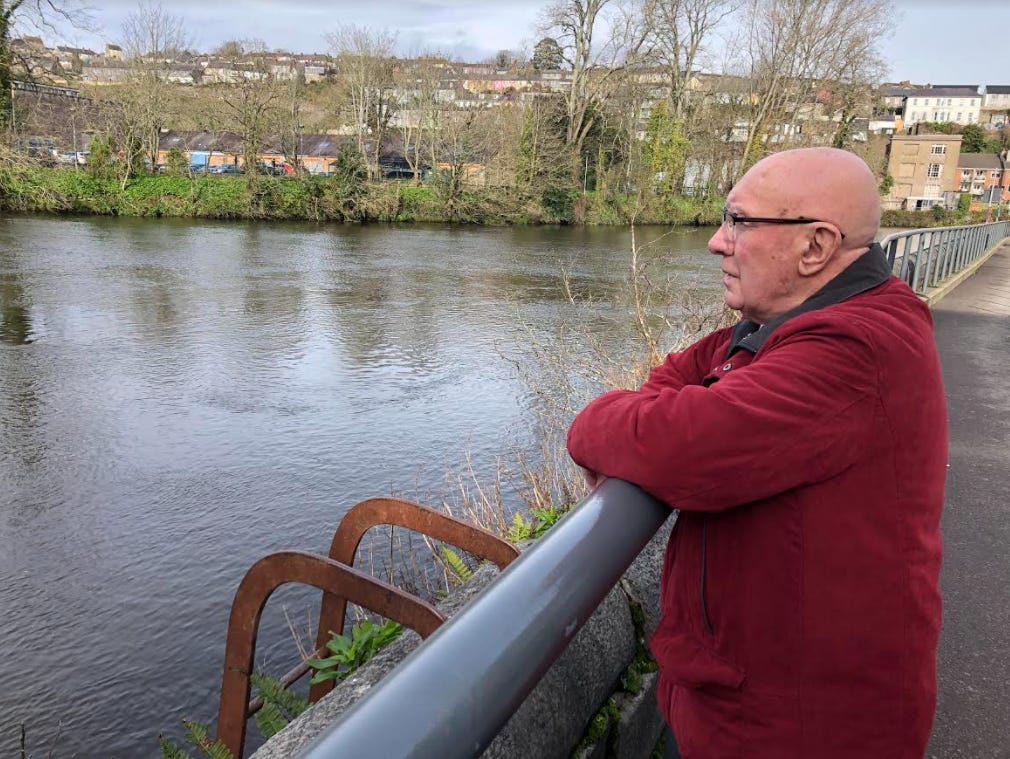
Liam’s relationship with the River Lee began at the Mercy Hospital. An innocuous ladder, still visible today on the quay wall, was the physical point of entry into the waters of the Lee, but also a kind of ritual initiation into the traditions of swimming for boys from The Marsh.
“We used to go down that ladder when the tide would be practically out or just coming in and ‘twould be only up to our waist for a while. As the tide came in you had to get braver and braver!”
The ladder was the starting point of their watery circuit.
“We used swim from the Mercy hospital down to the North Gate Bridge and we’d come up the steps, ran all the way back up the North Mall, over Vincent’s Bridge and you dived in again and like even if you weren’t a great swimmer the tide would take you down along,” Liam told us when we interviewed him in 2012 and in 2019 for the Cork Folklore Project.
Liam and his gang were wading into the Lee before the Inniscarra dam was built in the early 1950s, so the boys didn’t have to contend with the risks of discharges from the dam creating a surge in the river flow. They would still have experienced variations in tidal height and flow strength as the tides altered with the cycle of the moon.
Schooling in the water was simple and bare bones Liam said: “You just copied the bigger fellas!”
Not only did they learn swimming strokes from the older boys but they also discovered how to cope with the Lee’s fluvial idiosyncrasies. At the time raw sewage was still being discharged into the Lee.
“‘Twas very dangerous and very dirty let me tell you. We’re all living today because we all learned how to swim with our mouth shut! The stuff that came out of the Mercy we just pushed it to one side and swam away.”
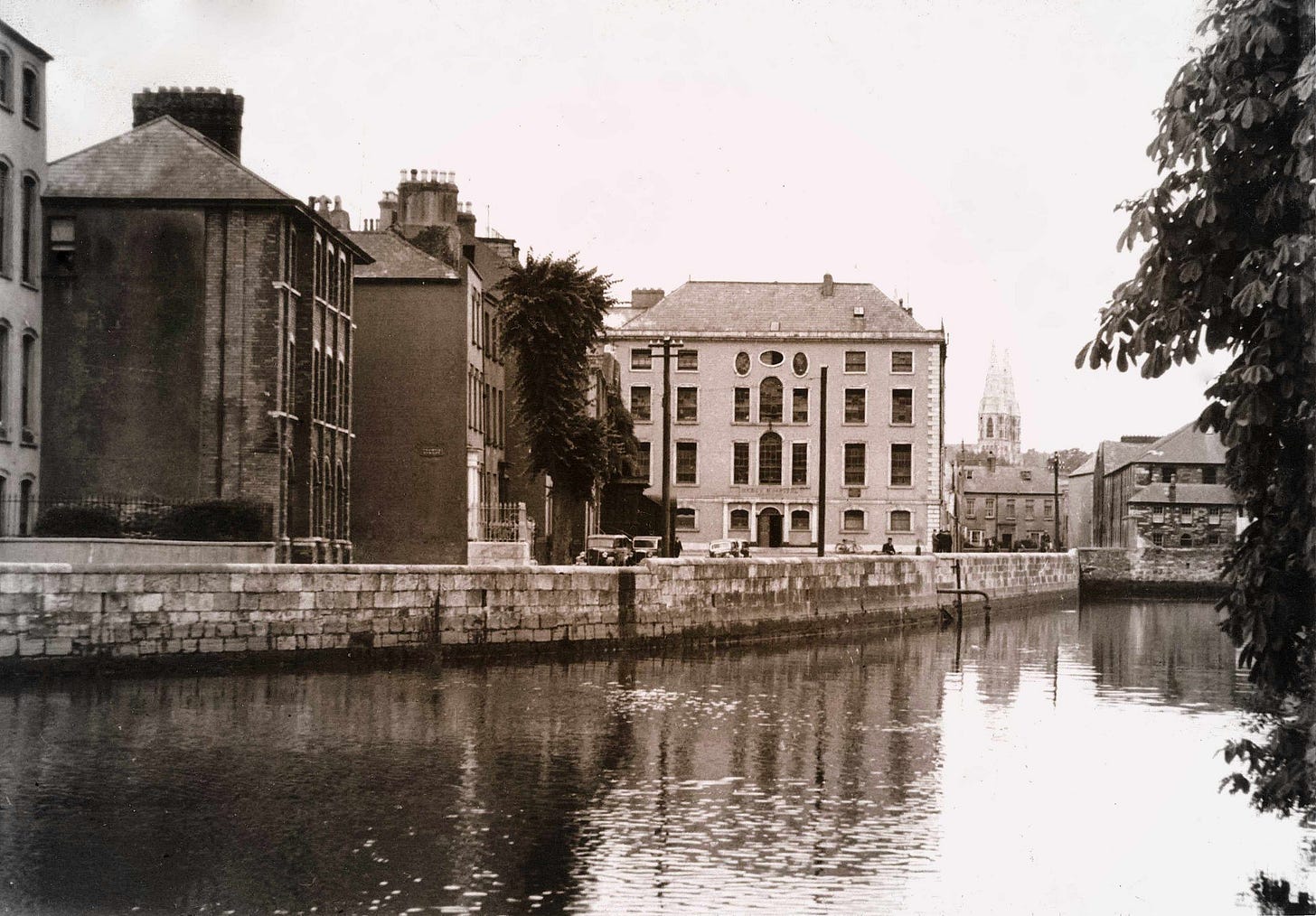
One hazard, however, which they were able to mitigate, was the riverbed at the foot of the ladder: “When the tide was out we used go down on the beach and we used to put flat stones around the end of the ladder so when you put your feet down it was a bit even,” Liam told us.
It’s small concessions such as these that made the river a bit easier to swim in in the days prior to copious health and safety regulations.
There may have been easier, safer or cleaner places to learn to swim in the Lee at the time but the sense of danger, its convenient location, and the force of habit probably maintained the ladder’s position as the first place to swim for the ‘Marshites’ at least.
As the boys grew older and bolder they began to push beyond both their geographical boundaries and their comfort zones.
Graduation
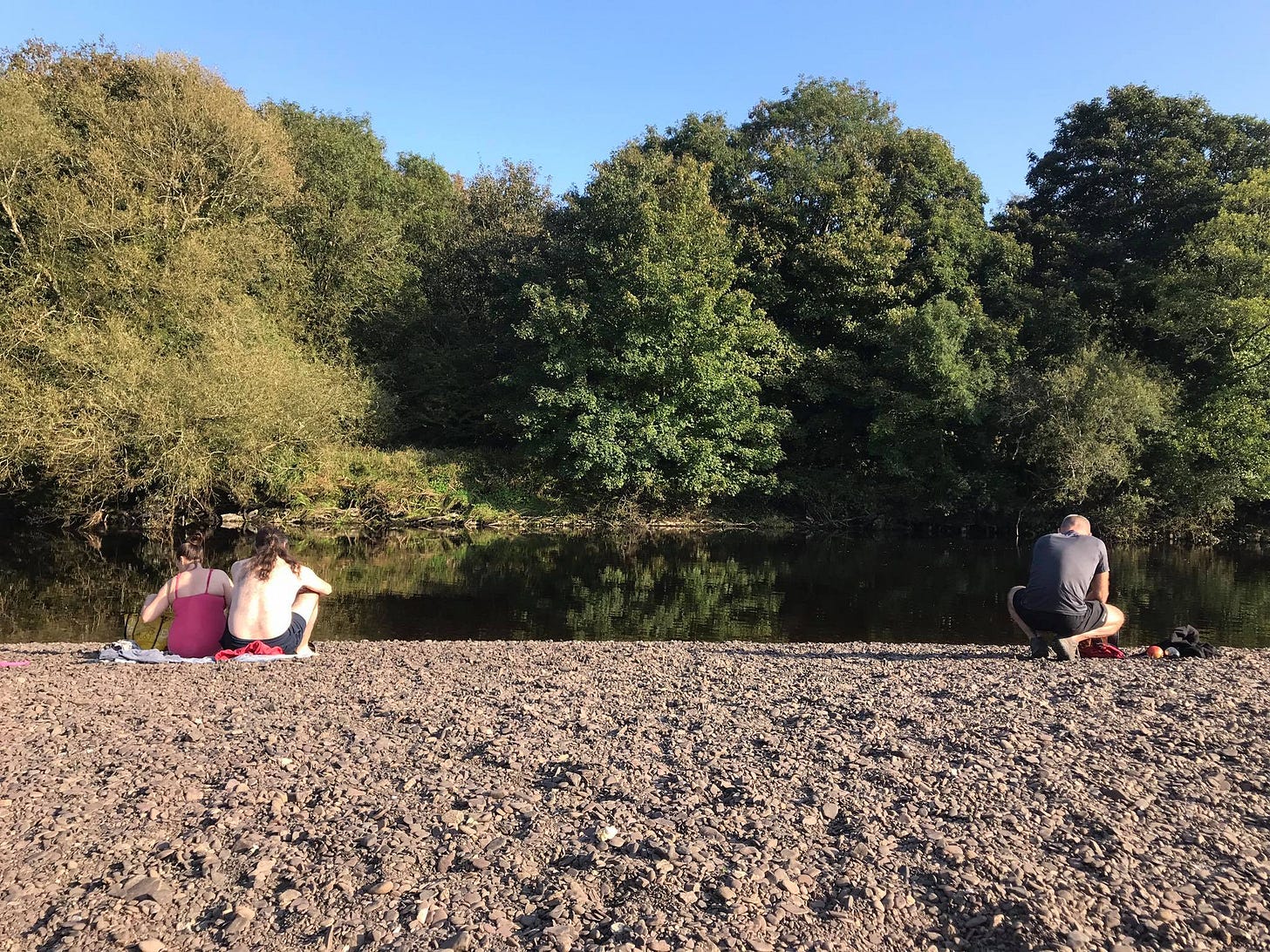
“You graduated up to the weir and once you were swimming in the weir then you were a good swimmer like,” says Liam.
After the weir, they moved further upriver again to a more ominously named swimming spot, and one which remains a formidable challenge for swimmers today. “By the Angler's Rest you had a place called the Hell Hole. That was a great challenge to us because we all fancied ourselves as swimmers.”
The Hell Hole is at a sharp bend in the river Lee. On the inside of the bend where swimmers enter the water from the stony beach (pictured above), the flow is not so strong and the depth not so deep. But as you cross the river to the other side of the bend the depth drops dramatically and the speed of the river increases significantly.
The area is also prone to eddies and mini-whirlpools.
“When I look back at it now sure it was crazy, it was very dangerous. ‘Twas kind of a boast that you swam at the hell hole,” Liam said.
Swimming with and against the tide
Once again there is a clear sense that the braggadocio and swagger that came with risk-taking in the river brought a social status amongst the boys themselves. But also that swimming was a factor in forming their individual and group identities. These experiences served to bond the group closer together and lay the basis for many friendships and memories in later life.
Yet there were limits to the risks some boys would take.
“We’d jump off the Shakey Bridge.The braver fellas would dive off it but I never dived off.” There is only so far that peer pressure can push some people.
“Of all the swimming that I done in the Lee - from the Hell Hole down to Blackrock- I never saw a woman swimming in the Lee. Or girls our own age, I never saw a girl swimming. I’m going back now to the 1940s and the 1950s,” said Liam.
Liam’s guess? “I suppose it was immodest!”
There’s some truth to what Liam says - there were likely far fewer women swimming in the Lee when Liam and the Marshites were splashing about - but they did exist.
“‘Tis in there I learned how to swim,” Phil Corcoran told us when we interviewed her in 2011.
‘Tis the Cork Harbour Park now in the Low Road. My uncle threw me in. I was about six. And I had to learn how to swim. Oh by god you learned how to swim!”
There were also swimming pools - or baths to use the Cork vernacular - where there was supervised swimming.
A city of bathing houses
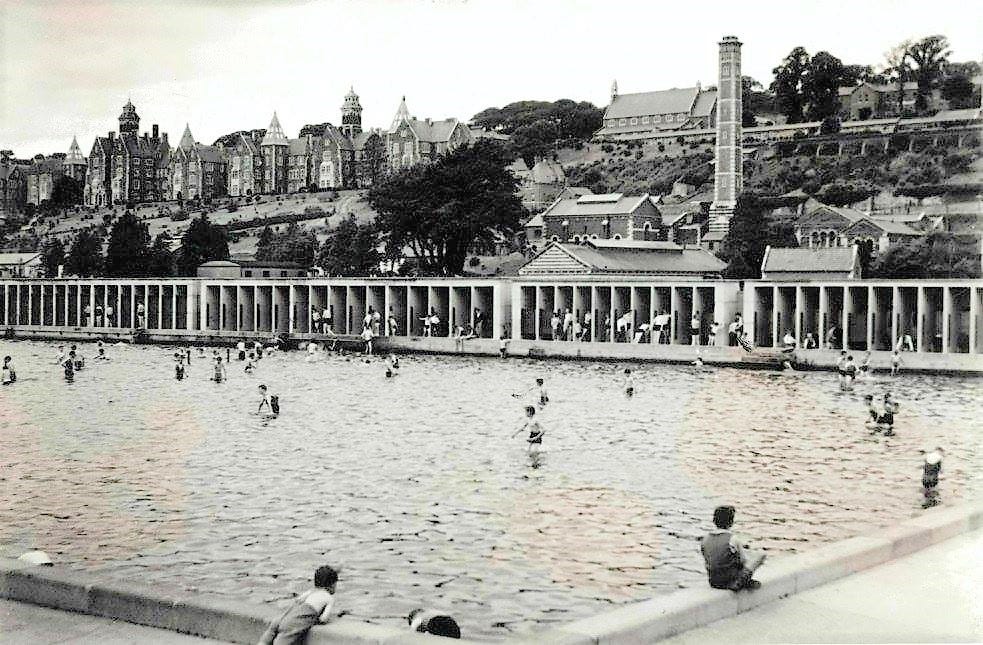
In the 19th century Cork was awash with bathing houses. The city housed at least fourteen baths, but by the turn of the century the only remaining public baths were situated by the Marina. The new century brought with it a new public bathing house, situated on Eglinton Street, which was the focal point for Cork swimmers until 1934 when the Lee Baths on the Carrigrohane Road were constructed at a cost of £23,000.
This meant that Corkonians once again had more choice of baths.
Billy McCarthy recalls how they sometimes chose which place to swim in
“I remember going to the Eglinton Street Baths and the place was too packed to swim, So despite having paid our three pence [entrance fee], we came out of it, and headed up for the Lee Baths on the Straight Road which cost nothing and that is where I learnt to swim,” Billy recalled when he was interviewed him for the Cork Folklore Project. (Billy’s interviews were conducted before his untimely death in November 2020)
When The Lee Baths opened in the 1930s, tenement buildings still dominated the city and many people would have grown up with access to with a single shared outside toilet and tap, in single income families and thus had limited scope for spending on leisure. A free amenity such as the Lee Baths was hugely attractive.
Philomena Cassidy, from the Marsh in the centre of the city, recalled how her mother said “there was stagnant water in Eglinton Street Baths so we wouldn’t be allowed go there. But you were allowed up to the outdoor [Lee Baths] in the summer.”
“We cycled up and walked up with our togs under our arm, and our towel. We often had a picnic up there too, you’d bring the flask and sandwiches,” Philomena told us when we interviewed her in 2019.
“To me now the summers were lovely that time, but they were probably the same as what they are now,” she said keeping nostalgia in check. Besides, then as now, you had to keep a close eye on your belongings.
“You had boxes then all around the pool and that’s where you togged off. Your clothes then could be stolen- there was nobody watching the boxes!” In order to avoid “coming home in your togs, we always had someone minding the box, or we’d swim in front of the box.”
When and where this happened, it was the girls who did it, and not so much the boys based on our interviews.
A further distinction between the sexes was that in the Lee Baths,Monday, Wednesday and Friday was for the girls and Tuesday, Thursday and Saturday was for the boys.
It’s likely that propriety and modesty probably dictated this arrangement.
Segregation was also practised at Eglinton Street Baths in the form of designated male and female pools. This meant that everyone could attend on any day while still maintaining so-called moral decency.
The indoor setting of the Eglinton Baths was rudimentary but functional, as Derek O'Connell, originally from Sunday’s Well, recalled.
“It was a great facility. It was anything but luxurious but sure we were grand with it. Looking back it was very primitive”
As Derek explained, the Eglinton baths consisted of two pools, a boys' pool and a girls’ pool, white tiles, with a balcony around each pool and communal showers.
“I remember being cold: the showers were hot but the whole place was freezing. It wasn’t unusual to be blue and wet, but that was fine!” The other thing that stood out was the stench of chlorine and the post-swim ritual of a visit to Matt Kiely’s chipper on Maylor Street “to warm the bones.”
The conditions at the Eglinton Baths were cramped and cold as Marion O’Sullivan recalled.
“You never needed to learn to swim cause you couldn’t, there was no room
“When you learned to swim properly then you could go up to the deep end and you might get a swim, but otherwise they were like sardines in a can, honest to God now like, you’d jump into the water and that was it, you stood there and then I’d be frozen then you’d have to come out under the showers and I’d spend my whole time standing under the hot shower cause I was numb with the cold.”
“The noise and screaming was all part and parcel of swimming that time,” Marion added.
But despite the cramped conditions and the rules galore, boys and girls found ways round them to have ‘the craic’.
Patrick Walsh recalled how this was done.
“Diving in from off the side wasn’t allowed but those of us that were brave enough went up, a kind of a balcony over dressing boxes with open benches. You could dive off the wall there or off the railing into the pool but if you were caught you were thrown out!”
Swimming though was only one of the functions and purposes of the baths as Marion O’Sullivan pointed out: as the name implied, this is where people also came to wash.
“People don’t realise the poverty that was there then, but there was guys went into the baths, they went in in their drawers and they came out and went home, and the drawers was wet like, twould be a beautiful summer day like.
“But there was children there, that was their wash, they went in there, they had their wash, they came home and they’d have the same knickers on them.”
Any conversation about swimming today will inevitably lead to dryrobes. Swimwear was far more basic throughout most of last century; for many swimwear wasn’t even an option as Noreen Hanover recalled.
“We would be allowed go up the baths in the summertime and there was an outdoor pool, which Cork don’t have now like, and we would go up there. We didn’t have swimming suits, let me tell you, it would be in our old underwear, that’s what all the girls used to have. Like, unless it was one young one that was developed that had parents who would buy them. But we certainly didn’t have any, it was our old nicks we used to have; navy ones, and we would go up to the baths then.”
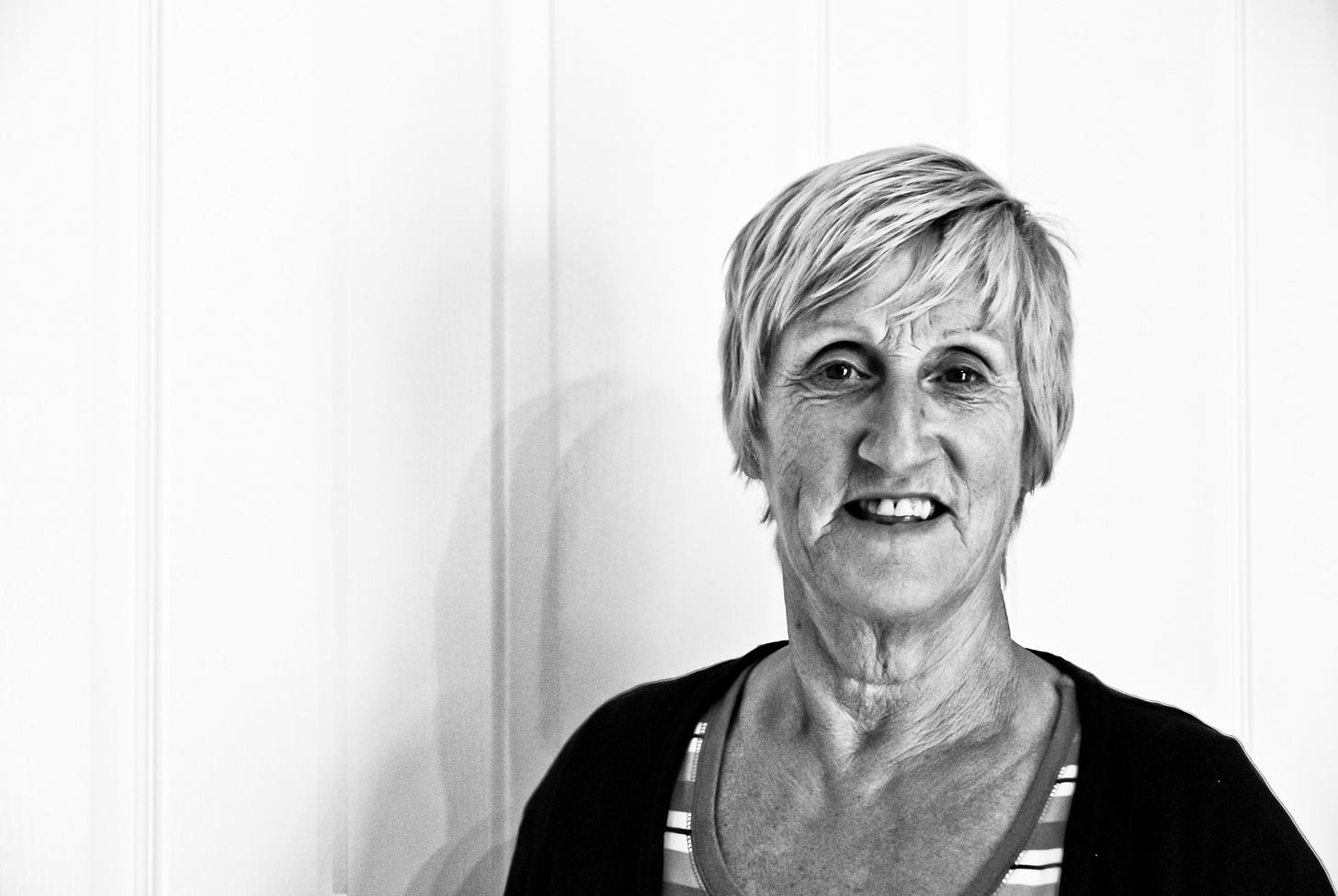
“Another thing that would make you laugh is the assortment of bathing togs. You’d have fellas with their sister’s bloomers, or their mother’s bloomers and all different colours like. But no one gave a damn that’s just the way things were.”
There was a youthful ingeniousness also to how groups of lads would get swims in as Joe Scanlan told us in a story that took in farmers, horse and carts, Mary Ryan’s bar, and Power’s whiskey
“In the Coal Quay- farmers used to come in the mornings with the horse and carts. Then the famous Mary Ryan’s [bar]- they’d go down there for their little pick me up in the mornings. They’d come back after an hour and most horses would run on autopilot for (the) home journey.
“If yer man had a little too many nips of ‘Powers’ he’d fall asleep on the cart. We’d jump onto the back and the farmer wouldn’t even know we were there. We’d go half way out the Carrigrohane Straights, which was the country to us, and we’d hop off there into the Lee Fields to have a swim, sometimes in our clothes- oh yeah!
We were young, foolish but happy. We hadn’t a care in the world.”
*All quotations are from the Cork Folklore Project Archive. SR refers to Sound Recording number in Cork Folklore Project Archive which can be accessed online.
Philomena Cassidy SR 732 (Grattan Street Stories HSE Collection) 2019
Noreen Hanover SR 332 (Cork’s Main Streets Collection) 2004
Billy McCarthy SR 220 (Life Journey’s Collection) 1998
Derek O'Connell SR 762 (Grattan Street Stories HSE Collection) 2019
Marion O'Sullivan SR 528, 2014
Liam Ó hUigín SR 630 (River Lee: Landscapes of Memory Collection) 2017
Liam Ó hUigín SR 422 (Cork Memory Map Collection) 2012
Patrick Walsh SR 509 (If The Stones Could Speak Collection) 2014
Phil Corcoran SR 437 (Cork Memory Map Collection) 2011

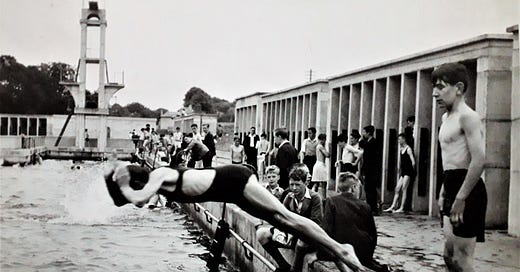




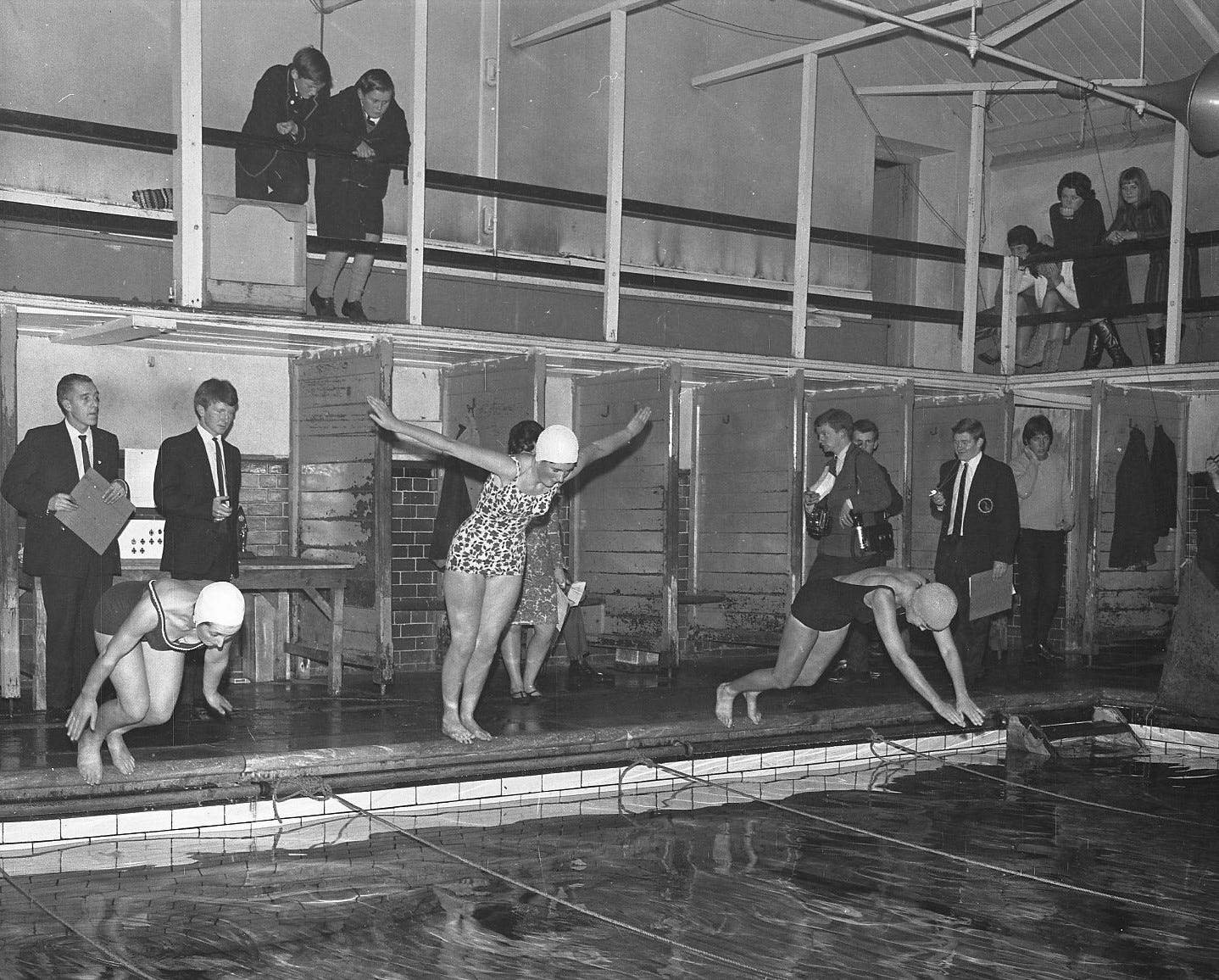
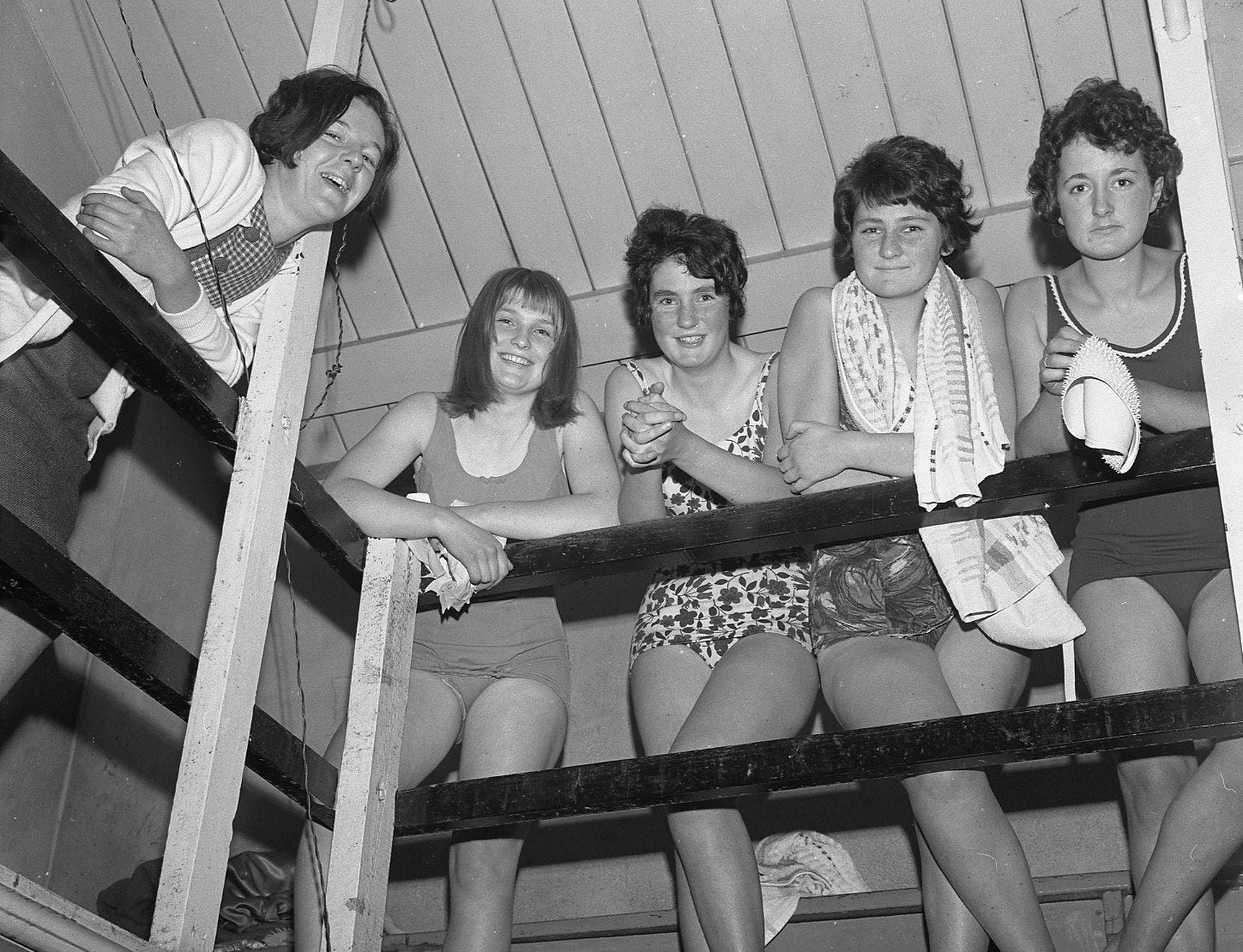



Great article. I didn’t grow up in Cork so fascinating to read, the mind set of swim anywhere, anytime is familiar though!
Seeing it in print makes me wonder how we survived.